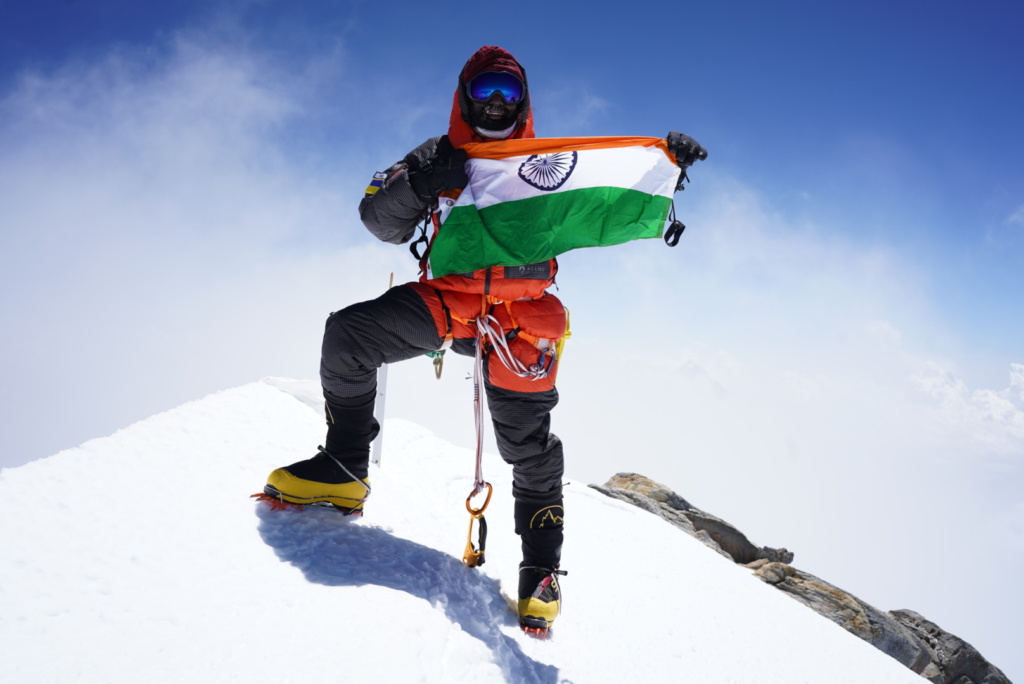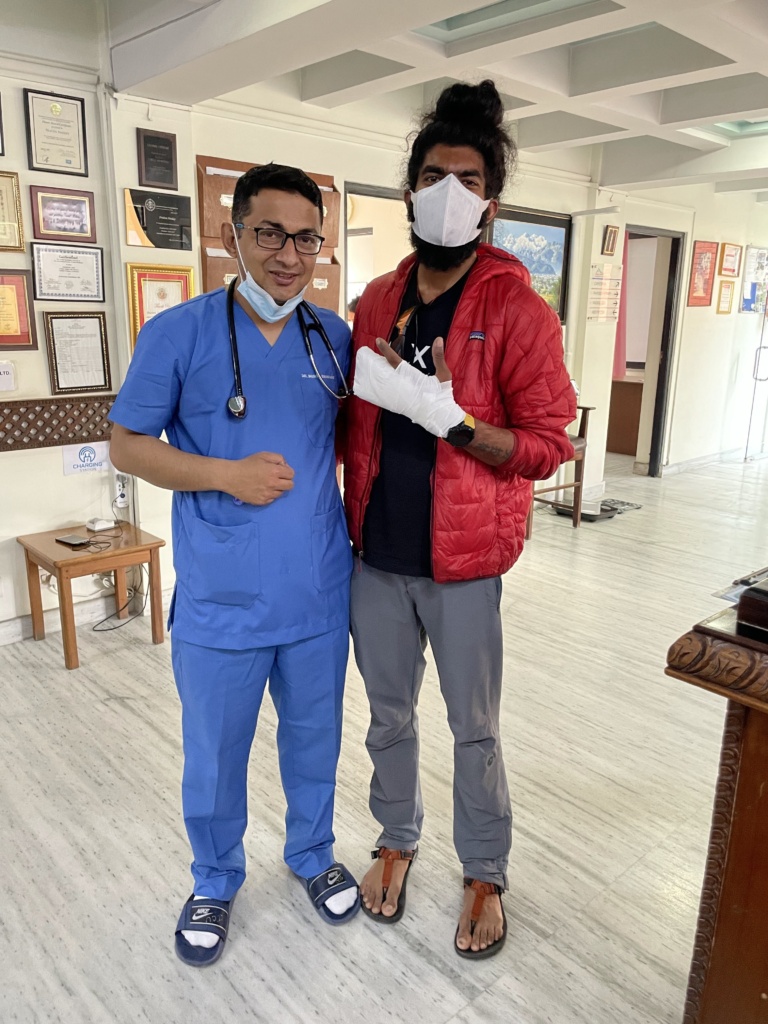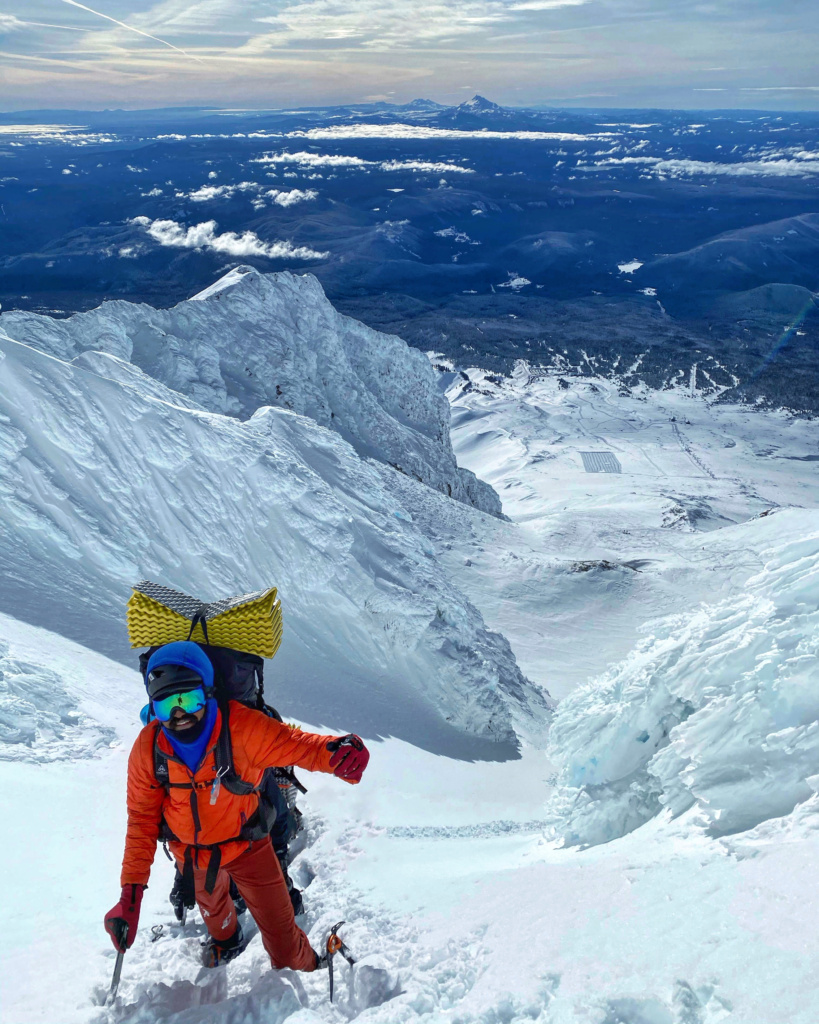After climbing Manaslu, Anurag Nallavelli took on his second 8,000 metre climb without supplemental oxygen.

First published: https://www.firstpost.com/india/high-on-the-hills-how-anurag-nallavelli-conquered-his-fears-and-mountain-summits-10703531.html
High on the hills! How Anurag Nallavelli conquered his fears and mountain summits
‘The summit is never my goal… It’s all about the experience, the people you meet along the way and what I can learn from the expedition,’ Nallavelli says
The odds were stacked up against Anurag Nallavelli, 30, when he arrived at Dhaulagiri, the seventh highest mountain in the world, on 26 March. His right shoulder felt dodgy, still recovering from a dislocation that he had suffered during a climb in January. To make matters worse, his body felt weak after suffering food poisoning en route to base camp.
He was now looking to climb without any supplementary oxygen or a high-altitude guide. Given his physical condition, it was likely to make things only more taxing for him on the mountain.
However, at 11.20 am on 9 April, Nallavelli stood on the summit of Dhaulagiri. The progress had been slow and tedious. And closer to the summit, things had been alarming to say the least. He had first lost his backpack after an accident, a few hundred metres below the top. On his descent, the wind took away his left glove, resulting in frostbite to three of his digits.

Yet, Nallavelli made it back to base camp without any major mishaps. It had taken him a little over two weeks to make the top of Dhaulagiri, in a style that climbing purists most vouch for. The learning curve had been steep. But it’s only what Nallavelli had subscribed to, ever since he’d had his first brush with the outdoors.
***
Until four years ago, Nallavelli lived the typical life of an Indian techie in the United States. After completing his Masters’ degree in 2016, he found employment as a software engineer at Ford Motor Company in Michigan. The average week saw him glued to a computer screen for long hours. On the weekend, he was off partying with friends or would visit a nearby casino and indulge in long nights of poker. The latest iPhone was purchased in a flash; the wardrobe was usually bursting at its seams, given his penchant for retail therapy.
Then out of the blue, a cousin connected with him and asked if he was interested in going camping. When they set off for Havasu Falls in Arizona, none of them knew how to pitch a tent, let alone survive in the wilderness. But there was something about the outdoors that Nallavelli connected with and a month later, he and another friend decided to hike the Four Pass Loop in Colorado.
“It’s quite challenging and not recommended for beginners because of the altitude. The weather conditions can vary as well — we were pounded by hail one afternoon. So you need some experience to tackle it,” Nallavelli recalls.
They made every rookie mistake in the book on that trip. After making a rapid ascent on the first day, they suffered the effects of altitude. They couldn’t cook meals after forgetting a matchbox and had little idea on the water sources en route. Though they survived the hike, Nallavelli knew he had a lot to learn.
“After that trip, I start hiking most weekends to learn more about the outdoors and get comfortable. I would fly directly from work on a Friday evening, hike over the weekend and get to office come Monday morning,” he says.
While in Michigan, there was the odd trip to go rock climbing or give ice climbing a go in the winters. But the idea of serious mountaineering was still a distant one.
When he heard of a trek to Everest Base Camp, he knew he had to go. But the Covid-19 pandemic cancelled that trip. Little did he know that it would also change his life in the time ahead.
***
The pandemic struck when Nallavelli was on a snowboarding trip to California in March. Travel restrictions meant he couldn’t figure out a way to get back home. He decided to take temporary refuge at an animal farm called Love Creek Sanctuary in Grass Valley. With the option to work remotely soon open, a week eventually turned out to be a year.
“After finishing work, there were enough options to run and bike in the area. I would also help out with the animals. It was all a part of my daily workout,” he recalls.
In June that year, Nallavelli pulled off his biggest solo hike yet — 486 miles on the Colorado Trail in a little over a month. The entire experience, alongside the minimalistic lifestyle he had adapted to on the farm, made him feel more connected with himself. He now yearned for bigger adventures.
“Bigger mountains, technical climbs kind of stuff,” Nallavelli says.
Through Mountain Project, a resource that brings together climbers, he connected with Mirchea Murariu and drove down to Oregon to see him. After a few climbs together, where Murariu, 52, observed his inclination to learn and his ability on rock, they decided to team up for good.
“He’s climbed all his life and the moment I met him, I realised he was very knowledgeable about the mountains. Due to Covid-19, I usually slept in cars at rest stops, worked from a cafe and would meet him later to go climbing. I learnt a lot from him,” he says.
Over the next six months, they climbed together on mountains such as Mount Rainier and Mount Hood. When the weather was bad, they would train at indoor climbing gyms. Nallavelli also did a solo climb on Pico de Orizaba, the highest mountain in Mexico.
After he gained confidence in his new partner’s abilities, Murariu proposed a climb up Denali, the highest mountain in North America, which had been his lifelong dream. Two weeks before the attempt, Nallavelli moved to Leadville, a city that’s located at over 3,000 metres, and trained in the mountains around town.
“The idea was to get used to the altitude. Sometimes I would start at 3 am, run up a mountain and return in time for work. I’ve even taken office calls from the summit on certain occasions,” he says.
In May last year, the duo climbed Denali in just 10 days. By the time they returned home, Nallavelli had already started looking at bigger mountains to further test his abilities.
***
A book written by Ed Viesturs, the first American to climb all fourteen 8,000 metre mountains of the world and without supplemental oxygen, had a major impact on Nallavelli. On his first big mountain, Manaslu, the eighth highest in the world, he decided to climb without supplementary oxygen. It meant longer acclimatisation schedules, where he would not only spend more time at higher camps, but also carry out more rotations up the mountain than other climbers.

Another big decision that he took on his first climb in Nepal was to go solo.
“You always have to listen to your partner, especially when he’s more experienced than you. If you’re unable to push, he is likely to insist on oxygen, which I was certain I didn’t want to use. When on your own, you have more freedom to make your own decisions,” he says.
Besides, he was cash-strapped after spending a lot of his earnings on Denali. Climbing without a high-altitude guide and oxygen would make things way cheaper.
When he made the summit at noon on 28 September, it only added to his confidence.
“There’s this active fear which gets you to always analyse what’s going on, what’s the next step. It’s a challenge as well as a risk, since your body can get cold and there’s also the chance of frostbite. But there are so many things to learn — how your body is dealing with altitude and what is your limit. For me, the motivation is to push the boundaries, instead of making things easier for myself at altitude,” he says.
The shoulder dislocation on Mount Rainier in January meant that Nallavelli spent a lot of time with a physical therapist before the Dhaulagiri climb. Even once he started training, his right arm was in a sling during the first few weeks. He would also spend many hours in a hypoxic room to get his body acclimatised to the altitude.
After two rotations on Dhaulagiri, where he went as high as 6,700 metres, he set off on the summit push on 6 April. From the onset, he maintained a slow pace. Another climber even advised him to consider the use of oxygen, but Nallavelli pushed on unperturbed. It was no different higher up, even after losing his backpack and glove.
“At the top, I was down on my knees, really happy. My expedition leader, Mingma G, later told me that he’d never thought I would make the summit without oxygen,” he says.
As he recovers from the frostbite that he suffered on Dhaulagiri, Nallavelli hopes to continue chasing climbs that test his abilities.
“The summit is never my goal — just an added bonus. It’s all about the experience, the people you meet along the way and what I can learn from the expedition,” Nallavelli says.